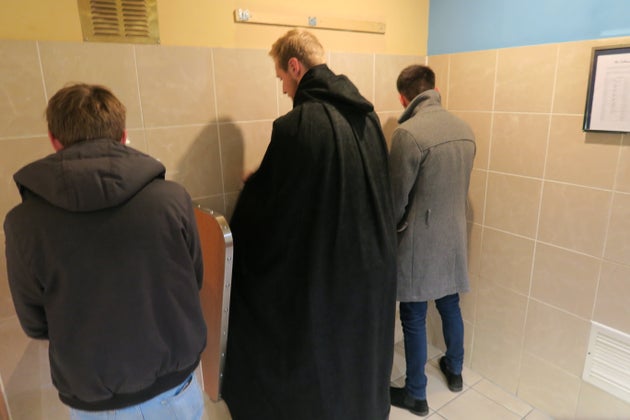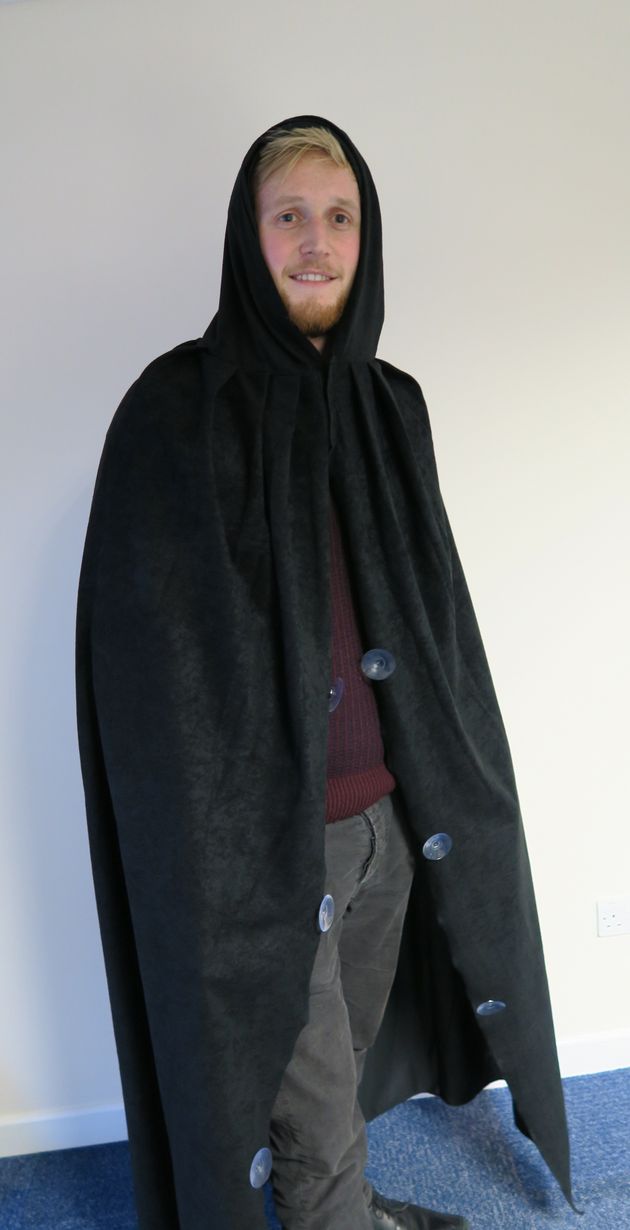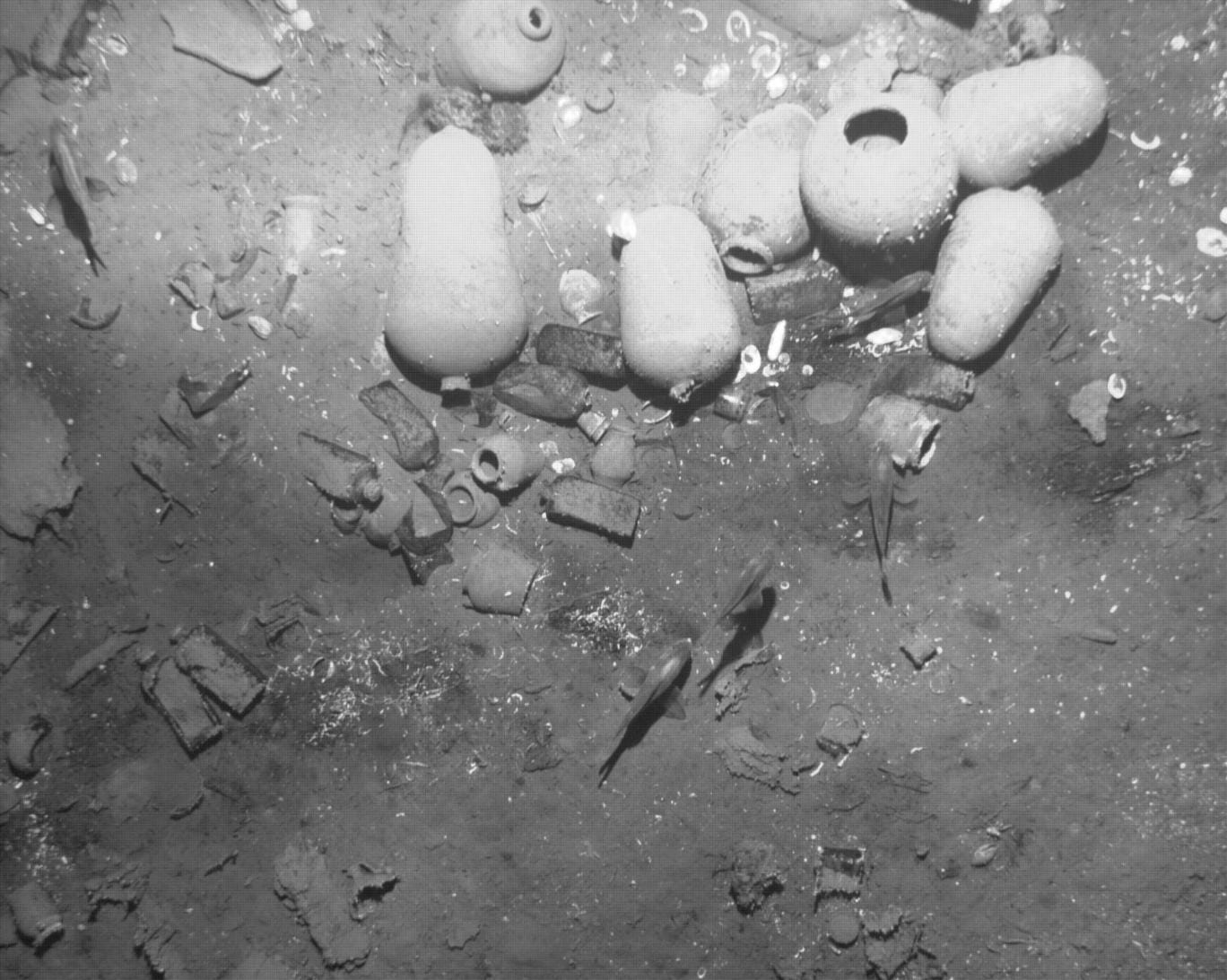
Friday, December 25, 2015
Sunday, December 13, 2015
Spanish Treasure Galleon San Jose Found Off Colombia's Coast

The San Jose and its estimated $17 billion treasure have been missing for more than 300 years.
by Nina Golgowski Trends reporter, The Huffington Post
After more than 300 years resting on the Caribbean floor, a sunken Spanish galleon believed to be carrying as much as $17 billion in treasure has been found, Colombia's president announced Friday.
"Great news: We found the galleon San Jose!” President Juan Manuel Santos tweeted.
The 1,066-ton ship was sunk by the British Navy in 1708 while carrying gold and silver bound for Europe during the War of the Spanish Succession.
Santos’ office shared underwater photos of cannons, ceramic and porcelain vases and a sword hilt nestled on the ocean floor on Saturday. Santos also tweeted a video showing a search team at sea.
The president called the find, located off Cartagena's coast, “a milestone for our underwater cultural heritage."
Though the war behind the ship’s downfall may be history, a modern-day legal battle over the shipwreck’s booty has been ongoing for several decades.
U.S.-based salvage company Sea Search Armada has been actively searching for the legendary treasure since the early 1980s. When it sank, the ship was carrying between $4 billion and $17 billion in gold and silver meant to help fund France's ongoing war against Britain, according to SSA.
Between 1980 and 1983, SSA Managing Director Jack Harbeston claims the company spent more than $10 million on surveying the ocean floor -- in addition to $2 million to $3 million over the next 28 years to "defend" the company's rights to it.
Harbeston, in an email to The Huffington Post, said the legal trouble began when the company made a pact with the Colombian government, promising that they would split any treasure collected from the wreckage.
When SSA later found what it believed to be the shipwreck's location and shared its coordinates with government officials, he says the government went back on that promise and further prohibited the company from visiting the site, going so far as to threaten "military force" should investigators return.
SSA consequently filed a lawsuit against the government in 1989, asserting its claim to the wreckage.
"Our thirty years of fighting for our rights in Colombia has led us to conclude that you can't believe a single thing the [Colombian government] says about the San Jose and our rights to it," Harbeston said.
In a major blow to the determined treasure hunters, a U.S. court in 2011 ruled that the SSA had missed the statute of limitations to sue for its right to the treasure. The group has since appealed that ruling.
According to Santos' office, the ship was discovered on Nov. 27 in an area that was not referenced by previous studies and searches.
Harbeston argues that if that's the case, why block the company from returning to the sites it previously visited?
"If, as the [Colombian government] claims, there is nothing at the sites disclosed to it by SSA, why wouldn't it let us visit the sites? If we visited our sites and found nothing then the game was over for SSA; we would fold our tent and leave. The [Colombian government] would be rid of us," he said.
Saturday, December 12, 2015
Stonehenge May Have Been Built Somewhere Else First, Then Moved
"Stonehenge is a second-hand monument."
- Ed MazzaOvernight Editor, The Huffington Post
- Stonehenge may not look very portable, but scientists say part of the massive ancient monument may have been first built somewhere else before being moved hundreds of years later.The new finding, published on Monday in the journal Antiquity, traces the bluestones -- or the smaller stones used at the 5,000-year-old monument -- to two quarries in Wales.But while the mystery of where the stones came from may have been solved, a new one has just emerged: Those stones were pulled from the quarries some five centuries before Stonehenge itself was built in what is now Wiltshire, 140 miles away."It could have taken those Neolithic stone-draggers nearly 500 years to get them to Stonehenge, but that’s pretty improbable in my view," Professor Mike Parker Pearson of UCL Institute of Archaeology and director the research team behind the study said in a news release. "It's more likely that the stones were first used in a local monument, somewhere near the quarries, that was then dismantled and dragged off to Wiltshire."Stonehenge's large "sarsen" standing stones, which weigh about 25 tons each, are from a quarry relatively close to the the monument. Researchers have long believed the smaller two-ton bluestones came from the Preseli Hills in Wales, but the team of geologists and archaeologists behind the new study says they've found the exact locations in Carn Goedog and Craig Rhos-y-felin. The research team uncovered an ancient "loading bay" from which the stones were pulled as well as the remains of burnt hazelnuts and charcoal from the quarry workers' campfires.Radiocarbon dating on the hazelnuts and charcoal puts the Craig Rhos-y-felin quarry at 3400 BC and Carn Goedog at 3200 BC.It's possible Stonehenge is simply hundreds of years older than previously estimated, but Parker Pearson told the Guardian he doesn't think that's the case."We think it's more likely that they were building their own monument [in Wales], that somewhere near the quarries there is the first Stonehenge and that what we’re seeing at Stonehenge is a second-hand monument," he told the newspaper.The research team has narrowed down the possible site of the original monument to a spot between the two Welsh quarries."We’ve been conducting geophysical surveys, trial excavations and aerial photographic analysis throughout the area and we think we have the most likely spot," Professor Kate Welham of Bournemouth University said in a news release. "The results are very promising -- we may find something big in 2016."
Friday, December 11, 2015
Suspected Burglar Hides From Cops In Pond, Is Killed By Alligator
"He hid in the wrong place."
by Lee Moran
Trends Editor, The Huffington Post
A suspected burglar was killed by an alligator while hiding in a Florida pond to avoid arrest, police believe.
The body of Matthew Riggins, 22, was discovered floating in a lake in Barefoot Bay, Brevard County, on Nov. 23, according to multiple reports.
The lower sections of his legs and a part of one arm were missing, reports the Orlando Sentinel.
The 11-foot-long alligator was so ferocious it had to be euthanized by a Florida Fish and Wildlife Conservation Commission trapper as Riggins' corpse was being recovered, according to Florida Today.
"He hid in the wrong place," local resident Laura Farris told Bay News 9.
Brevard County deputies were called to the locality on Nov. 13 after receiving reports of two men hiding behind homes, according to the Orlando Sentinel.
Officers searched the area with the help of K-9 units and a sheriff’s helicopter.
Riggins, from Palm Bay, managed to evade capture and called his girlfriend to say he was being chased, according to the reports. He'd previously told her he was going to break into homes with another unidentified man.
The search for the pair proved unsuccessful and was later called off. Riggins was not heard from again, and his family reported him missing to the Palm Bay Police Department the following day, reports WFTV.
Maj. Tod Goodyear from the Brevard County Sheriff’s Office told Bay News 9 that Riggins "probably went into the lake to hide from the officers and the dog, and came across that gator."
"To hide somewhere to try and get away, and then meeting up with an animal like that, no, I've never had that happen before," he added.
Riggins' alleged accomplice was arrested soon after, but is refusing to cooperate with deputies, according to WFTV.
Thursday, December 10, 2015
You Can Now Study Pizza At College
Students won't just debate the merits of thin versus sausage
by
- Trends Editor, The Huffington Post
Love pizza? Then this college major will be as easy as pie.
Students in England will learn how to make the perfect pie as part of a new degree.
Manchester Metropolitan University has teamed up with the Pizza Hut restaurant chain to offer the course, reports the Manchester Evening News.
Candidates won't just be topping flatbread with tomato sauce and cheese before slamming it in the oven, or debating the merits of thin versus sausage crusts, however.
They'll also learn everything needed to run their own successful business, from health and safety aspects to financial analysis, according to the Express Star.
The news has gone down well with students on Twitter.
"Over the next few years we will work hard to provide our apprentices and team members with the best training and development so that we can equip them with skills for life, not just for working in a restaurant,” Pizza Hut's HR director Kathryn Austin said.
More than 1,500 students will be enrolled in the next five years. KFC and McDonald's also offer similar apprenticeships in the United Kingdom.
Other unconventional degree courses currently on offer in the U.K. include Ethical Hacking at the University of Abertay in Dundee and Baking Technology Management at London's South Bank University, reports the Evening Standard.
Wednesday, December 9, 2015
Father And Son Cooks Accused Of Stealing $40,000 Of Chicken Wings
Paul and Joshua Rojek allegedly took the wings from the restaurant they worked at.


SYRACUSE, N.Y. (AP) — Authorities say a father and son stole more than $40,000 worth of chicken wings from a New York restaurant where they worked and sold them on the street or to other businesses.
The Onondaga County Sheriff's Office says 56-year-old Paul Rojek and 33-year-old Joshua Rojek, both of Syracuse, were caught stealing wings from the Twin Trees Too Restaurant in Syracuse.
Deputies say both men were employed as cooks when they placed numerous chicken wing orders with the restaurant's wholesaler. Officials say the Rojeks would later pick up the orders and resell them at a reduced price.
Deputies say the men billed about $41,000 worth of wing orders to the restaurant's account between last February and Nov. 21.
Both have been charged with grand larceny and falsifying business records. It couldn't be determined if they have lawyers.
Tuesday, December 8, 2015
Too Shy To Pee In A Public Bathroom?

Courtesy of Plumbworld
Urine Luck
The Privi-Pee aims to make your fear of peeing in public go down the drain.
If you're a guy who freezes up when you're shoulder-to-shoulder with a stranger at a public urinal, the Privi-Pee may one day be your No. 1 solution.
This device, not yet commercially released, is designed to help men hide their goodies as they do their business.
Online bathroom retailer Plumbworld unveiled the Privi-Pee prototype after a company survey reflected the anxiety some have over public toilets.
However, if these images look strange to you, please note that this device is still in its planning stages. And while many people agree that bathroom anxiety can be a serious issue, the company is not ruling out selling this product as a novelty item, too.
"We’re not sure when we’ll sell them yet, but we’re thinking about it being some sort of funny novelty product," Thomas Mulrooney, a Plumbworld marketing assistant, told The Huffington Post via email.
Mulrooney posted about the Privi-Pee in a Nov. 25 blog, explaining how the Plumbworld team invented the cover in an attempt to make public urination easier for the pee shy.
"The idea was based on a survey .... We found that 75 percent of male respondents said they would rather use a toilet cubicle/stall if a urinal adjacent to a free one was already occupied," Mulrooney said.
"Thirty percent said they got ‘stage fright’ when trying to urinate next to someone, which means that they couldn’t urinate at all."
When people suffer from paruresis, otherwise known as "shy bladder syndrome," they find it difficult or impossible to urinate in the presence of others, according to the International Paruresis Association website.
To use the Privi-Pee, a man must fasten the cape-like cover under his neck as he stands above the urinal. Suction cups at the end of the fabric adhere to the wall, creating a confined private space.
The device fits inside a backpack.

Daniel Cartland of Plumbworld tested the Privi-Pee and told Mulrooney's team he felt more comfortable using the urinal.
Members of the public who witnessed the testing found the concept a "genuinely funny idea," according to Mulrooney. "One man wondered if Daniel was some sort of bathroom superhero" because of the cape.
However, as fashion-forward and functional as it may seem, the Privi-Pee may not actually be all that effective in practice for those who struggle with a shy bladder.
"The problem is, people are concerned about other people paying attention to them, so if you pull out a cape, that is going to draw more attention to you," said Steve Soifer, CEO of the IPA and a University of Memphis professor.
Soifer also noted proximity is an issue, as people grow concerned when others are too close to them when they urinate.
"The product isn't useful for most people," he said, adding that it could potentially help one in a thousand individuals.
Those having trouble overcoming the issue of public urination can consider cognitive behavioral psychology, a standard treatment in the field, to help them get over their fears, he said.
Subscribe to:
Posts (Atom)











